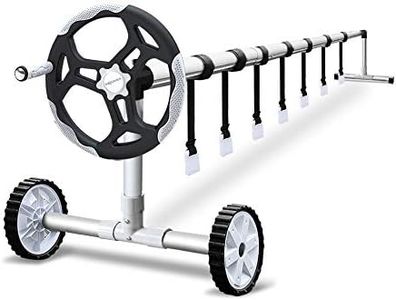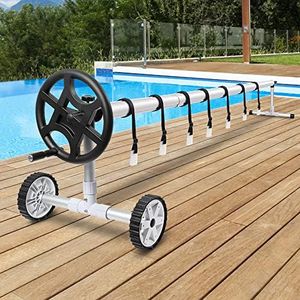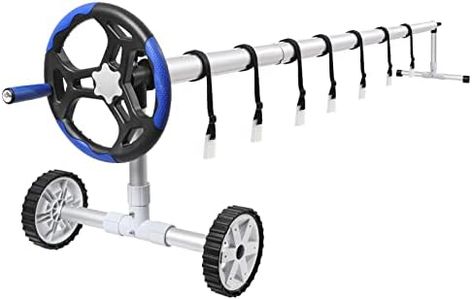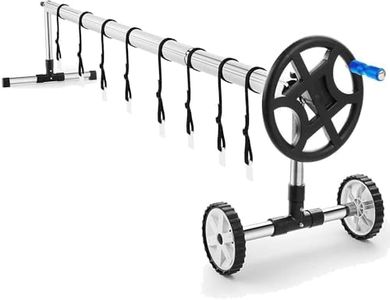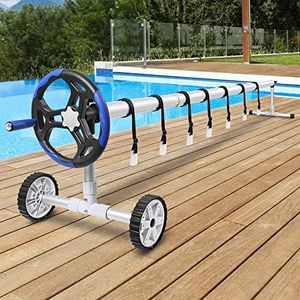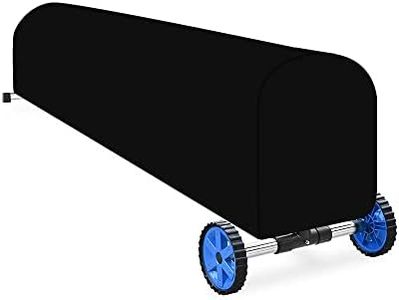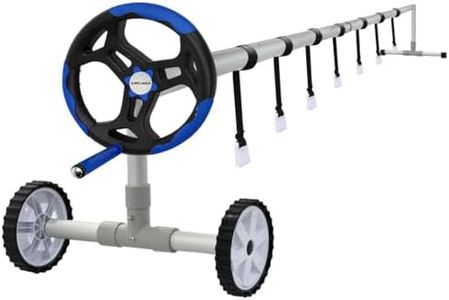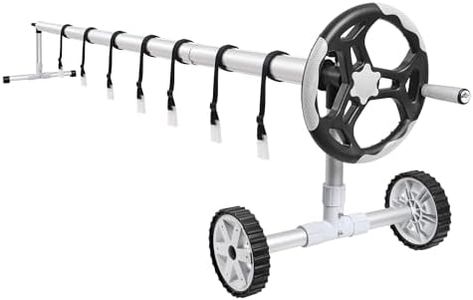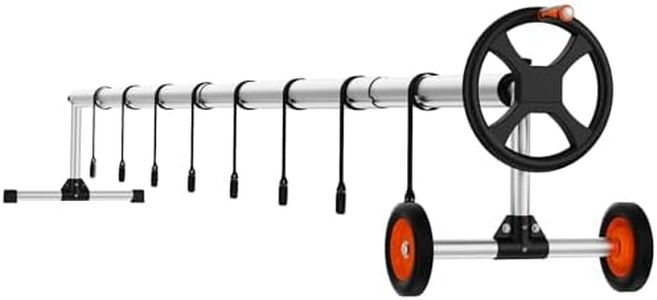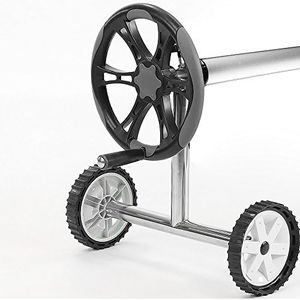We Use CookiesWe use cookies to enhance the security, performance,
functionality and for analytical and promotional activities. By continuing to browse this site you
are agreeing to our privacy policy
10 Best Solar Cover Reels
From leading brands and best sellers available on the web.Buying Guide for the Best Solar Cover Reels
When choosing a solar cover reel for your pool, it's essential to focus on functionality, ease of use, and durability. The right reel will make putting your solar cover on and taking it off much easier, extending the life of both the cover and the reel itself. By understanding the essential features, you'll be able to pick a reel that fits your specific pool, your physical requirements, and your expectations for convenience and maintenance.Pool Shape and Size CompatibilityThis refers to what types and dimensions of pools the solar cover reel can accommodate. It's important because a reel that is too small won't handle your cover well, while one that's too big can be bulky and more difficult to use. Most reels are designed either for rectangular or freeform pools, and their tubes can usually extend to fit a certain length range. You should measure your pool—length and width—before shopping. For small pools, basic models are fine, but for longer or wider pools, you'll need a reel that extends to match and supports the full cover. Matching the reel size to your pool ensures easy rolling and unrolling and can help avoid damage to the cover.
Tube Material and DurabilityThe tube is the central bar to which your solar cover attaches. Common materials are aluminum and stainless steel because they’re strong, lightweight, and resistant to pool chemicals and weather. Aluminum is light and corrosion-resistant, ideal for ease of handling, while stainless steel is heavier but often sturdier for extra-large covers. Choose a tube material based on the pool size and how much sturdiness you feel is needed. If you have a larger or above-ground pool, prioritize strength; for smaller pools, lighter tubes are usually sufficient.
Ease of Operation (Crank or Motorized)How you move the reel makes a big difference in usability. Many solar cover reels come with a hand crank, and some advanced types are motorized. A manual crank is usually enough for smaller covers and pools—with larger or heavier covers, a motorized option can save you effort, especially if you plan to use the cover frequently or have physical limitations. Assess how much physical strength you want to expend, and how often you'll be putting the cover on and off, to decide which mechanism fits best.
Mobility and Mounting OptionsSolar cover reels can be stationary (fixed) or mobile (on wheels). Mobility matters if you want to move the reel away from the pool for storage or to free up space. Wheels make it easy to roll away, while fixed systems offer more stability if you leave the reel by your pool. Consider your pool area layout—if you have limited deck space or multiple pool zones, a mobile reel may be better. For in-ground pools, both options are common; above-ground pools usually benefit from specially designed mounting systems.
Attachment SystemThis refers to how the cover connects to the reel, usually with straps or clips. A secure and easy-to-install attachment is crucial so the cover rolls up evenly and doesn't get damaged. Some reels offer easy-release or adjustable systems, which are handy if you swap covers or need to remove the reel seasonally. Think about how often you’ll remove or switch covers and how comfortable you are with DIY assembly—if you want quick changes, look for simpler, tool-free systems.
UV and Weather ResistanceSince solar cover reels are kept outside, they need protection from sunlight, rain, and pool chemicals. UV-resistant materials prevent the reel from becoming brittle or discolored, while weatherproof coatings extend its life. If your reel will be exposed year-round, pick one with UV and weather resistance to avoid premature wear. For seasonal use or sheltered pool areas, this may be less critical, but it's generally a good feature to ensure durability.
